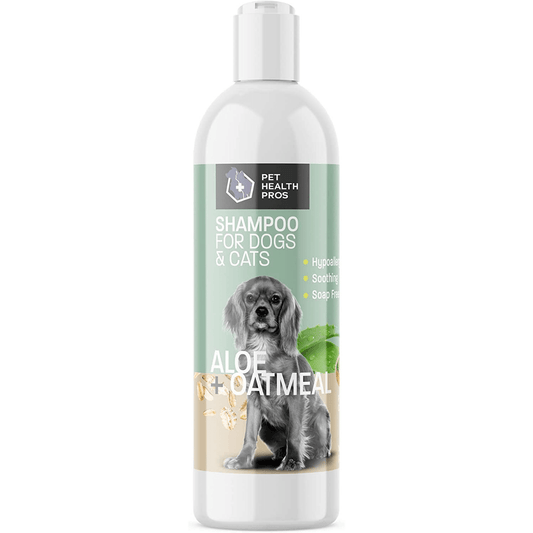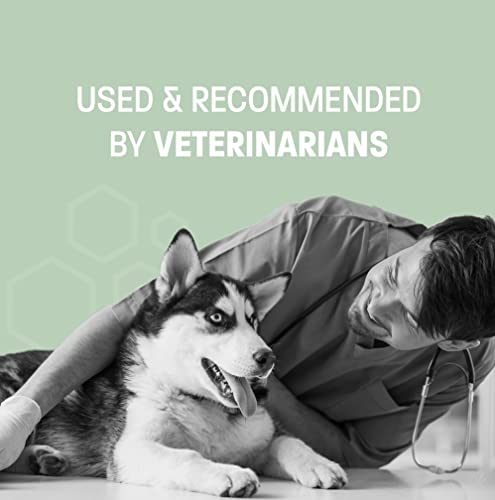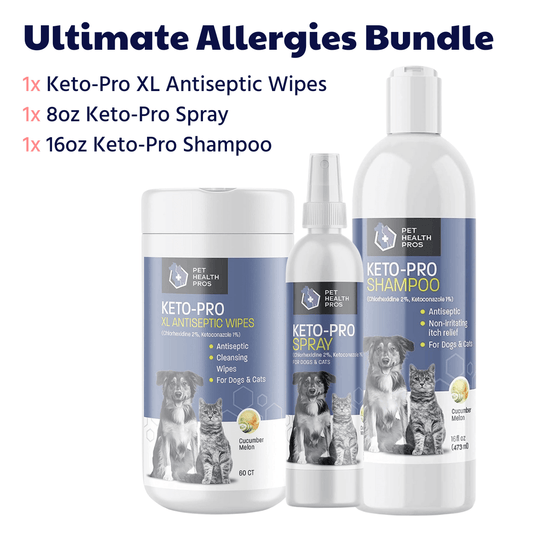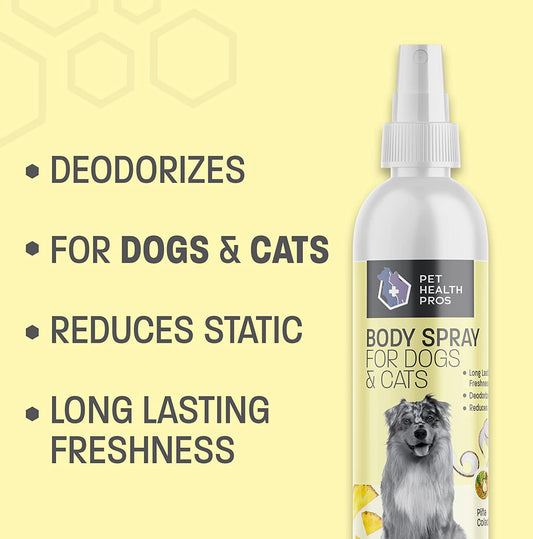Understanding Dog Scooting: Causes and Remedies
Dog scooting is a common behavior in dogs that can indicate underlying health issues. Understanding the causes and remedies for dog scooting is important for maintaining your pet's health and well-being. In this article, we will explore the various aspects of dog scooting, including its causes, preventive measures, and remedies.
Key Takeaways
- Regular veterinary check-ups are essential for early detection of anal gland issues.
- Proper hygiene and grooming practices can help prevent dog scooting.
- Diet and nutrition play a crucial role in maintaining your dog's overall health and preventing scooting.
- Home remedies such as soothing baths and dietary changes can provide relief for mild cases of dog scooting.
- Infections and irritations in the anal area can lead to discomfort and scooting behavior in dogs.
Understanding Dog Scooting
What is Dog Scooting?
Dog scooting is a behavior where a dog drags or scoots its bottom along the ground. This action is often a sign of discomfort or irritation in the anal region. It can be caused by various factors such as anal gland issues, skin conditions, or infections. Dog scooting may also indicate the presence of parasites or allergies. Proper understanding of the underlying causes is crucial for effective treatment and prevention. In some cases, it may be necessary to consult a veterinarian for a thorough examination and diagnosis.
To address the issue of dog scooting, pet owners should pay close attention to their dog's hygiene and grooming. Regular anal gland expression and bathing can help alleviate discomfort and reduce the likelihood of scooting. Additionally, maintaining a balanced diet and ensuring proper nutrition can contribute to overall anal health and reduce the occurrence of scooting. It's important to note that persistent scooting should prompt a visit to the veterinarian for further evaluation and potential treatment.
- Tips for Prevention:
- Keep the anal area clean and dry
- Monitor for signs of irritation or inflammation
- Consult a veterinarian for professional guidance
Note: The information provided is for educational purposes and should not replace professional veterinary advice or treatment.
Symptoms of Dog Scooting
Dog scooting is often accompanied by discomfort, irritation, and inflammation. It may also be a sign of anal gland issues or skin conditions. Dogs may exhibit excessive licking or chewing in the affected area, and you may notice a foul odor. Additionally, there may be visible redness or swelling in the perianal region. If you observe any of these symptoms, it's important to consult a veterinarian for proper diagnosis and treatment.
- Excessive licking or chewing
- Foul odor
- Redness or swelling
It's crucial to address these symptoms promptly to ensure your dog's comfort and well-being. Regular veterinary check-ups can help identify and manage underlying issues that contribute to dog scooting.
Health Risks Associated with Dog Scooting
Infections and Irritations
Infections and irritations can cause discomfort and distress for dogs. Anal gland issues are a common source of irritation, often leading to scooting behavior. Skin conditions, such as dermatitis and allergies, can also contribute to discomfort and itching. Proper diagnosis and treatment are essential for addressing these issues effectively. It's important to monitor your dog's behavior and seek veterinary advice if you notice persistent symptoms.
Anal Gland Issues
Anal gland issues in dogs can be a common cause of scooting behavior. When the anal glands become impacted or infected, dogs may scoot to relieve the discomfort. It's important to monitor your dog for signs of anal gland issues, such as excessive licking or scooting. Regular veterinary check-ups are crucial for early detection and treatment of anal gland problems. In some cases, manual expression of the anal glands may be necessary to alleviate the issue. If you notice persistent scooting or signs of discomfort, consult your veterinarian for proper evaluation and care. Dog anxiety can also contribute to scooting behavior, so it's essential to address any underlying anxiety issues to promote your dog's overall well-being.
Skin Conditions
Skin conditions in dogs can be a source of discomfort and irritation. These conditions may arise from various factors, including allergies, infections, and environmental triggers. Common skin conditions in dogs include dermatitis, eczema, and hot spots. It's important to identify these conditions early to prevent further complications. Proper hygiene and grooming play a crucial role in managing and preventing skin conditions. Regular bathing with mild shampoos and moisturizing the skin can help alleviate dryness and itching. Additionally, a balanced diet rich in omega-3 fatty acids can promote healthy skin and reduce inflammation. For dogs prone to skin conditions, it's essential to schedule regular veterinary check-ups to monitor their skin health and address any emerging issues promptly. Remember, early detection and proactive care are key to maintaining your dog's skin health.
Preventive Measures for Dog Scooting
Proper Hygiene and Grooming
Proper hygiene and grooming are essential for maintaining your dog's overall health and well-being. Regular bathing and brushing help to keep your dog's coat clean and free from dirt and debris. Grooming also provides an opportunity to inspect your dog's skin for any signs of irritation or infection. Additionally, maintaining nail and ear hygiene is crucial to prevent discomfort and potential health issues. A consistent grooming routine can contribute to early detection of skin conditions and other health concerns, allowing for prompt intervention and treatment. Remember to use pet-friendly grooming products and consult with Pet Health Pros for expert advice on grooming essentials and best practices.
Regular Veterinary Check-ups
Regular veterinary check-ups are essential for maintaining your dog's overall health and well-being. During these check-ups, your veterinarian will assess your dog's anal gland health, skin condition, and overall hygiene. They will also provide guidance on diet and nutrition to ensure your dog's digestive health is optimal. Additionally, your veterinarian may recommend supplements for dog arthritis to support joint health and mobility. These check-ups are an opportunity to address any concerns and receive professional advice on preventive care. By staying proactive with regular veterinary check-ups, you can help prevent potential health issues and ensure your dog's comfort and vitality.
Remedies for Dog Scooting
Home Remedies
Home remedies can provide skin allergy relief for dogs. These remedies include soothing baths with oatmeal and calendula, which can help reduce itching and inflammation. Additionally, applying coconut oil or aloe vera topically can provide relief from skin irritation. It's important to consult a veterinarian before trying any home remedies to ensure they are safe and appropriate for your dog's specific condition. Here are some examples of soothing bath recipes for skin allergy relief:
| Ingredient | Benefit |
|---|---|
| Oatmeal | Soothes itching and reduces inflammation |
| Calendula | Anti-inflammatory and promotes healing |
| Coconut oil | Moisturizes and soothes irritated skin |
| Aloe vera | Cooling and anti-inflammatory properties |
Tip: Always perform a patch test before using any new topical treatment on your dog's skin to check for adverse reactions. Remember, home remedies should complement, not replace, professional veterinary care.
Medication and Treatment
When it comes to medication and treatment for dog scooting, it's important to address specific conditions that may be causing this behavior. Hot spots are one such condition that can lead to discomfort and itching, prompting dogs to scoot. Identifying and treating hot spots is essential in managing dog scooting. Additionally, proper medication and treatment can help alleviate underlying skin conditions and irritations that contribute to scooting behavior. It's crucial to consult a veterinarian to determine the most effective treatment plan for your dog's specific needs. In some cases, a combination of topical treatments and oral medication may be necessary to address the root cause of the issue. Remember, consistent and appropriate medication and treatment are key to resolving dog scooting and ensuring your pet's well-being.
Surgical Options
Surgical Options
Surgical options for addressing dog scooting may be considered in severe cases where other remedies have been ineffective. Surgical intervention may be necessary to address underlying issues such as anal gland impaction or tumors that are causing the scooting behavior. It's important to consult with a veterinarian to determine the most appropriate surgical approach for your dog's specific condition.
- Surgical intervention may involve the removal of anal sacs or the excision of tumors in the anal area.
- Recovery from surgical procedures may require post-operative care and monitoring for any signs of complications.
It's crucial to follow the veterinarian's post-operative care instructions diligently to ensure the best possible outcome for your dog's health and well-being.
In some cases, surgical options may be the most effective way to alleviate the discomfort and health risks associated with persistent dog scooting. However, it's essential to weigh the potential benefits against the risks and consider alternative remedies before opting for surgical intervention.
If your dog is scooting, it could be a sign of an underlying issue that needs attention. At Pet Health Pros, we understand the importance of your pet's health and well-being. Our top-grade pet health supplies, made in the USA and backed by a 100% satisfaction guarantee, are designed to keep your furry friend happy and healthy. Visit our website to explore our range of affordable pet health supplies and give your pet the care they deserve.
Conclusion
In conclusion, understanding dog scooting is essential for every pet owner. By recognizing the causes, symptoms, and health risks associated with dog scooting, pet owners can take preventive measures to ensure the well-being of their furry companions. Proper hygiene and grooming, a balanced diet, and regular veterinary check-ups are crucial in preventing dog scooting. Additionally, being aware of the available remedies such as home remedies, medication, and surgical options can help address dog scooting effectively. With the right knowledge and care, pet owners can promote the overall health and happiness of their dogs.
Frequently Asked Questions
What is dog scooting?
Dog scooting refers to the behavior of a dog dragging its bottom along the ground. It is often a sign of discomfort or irritation in the anal area.
What are the common causes of dog scooting?
Common causes of dog scooting include anal gland issues, skin irritations, infections, and gastrointestinal problems.
What are the symptoms of dog scooting?
Symptoms of dog scooting may include redness or swelling around the anus, excessive licking or biting of the anal area, and a foul odor.
Are there health risks associated with dog scooting?
Yes, health risks associated with dog scooting include infections, anal gland issues, and skin conditions that can worsen if not addressed.
How can dog scooting be prevented?
Dog scooting can be prevented through proper hygiene and grooming, a balanced diet, and regular veterinary check-ups to address any underlying issues.
What are the remedies for dog scooting?
Remedies for dog scooting include home remedies such as soothing baths, medication and treatment prescribed by a veterinarian, and in some cases, surgical options to address chronic issues.









